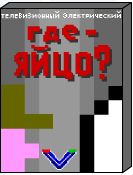Retro Replay Review
Gameplay
Where’s an Egg? places you in the shoes of a no-nonsense Boise policeman tasked with tracking down a missing egg. The core gameplay loop revolves around close-quarters interrogations. You’ll question a cast of witnesses, each offering cryptic, picture-based responses in the hopes of leading you to the culprit. Every decision carries weight: picking out the right suspect rewards you with the precious egg, while aiming at three innocents lands you behind bars.
The interrogation mechanic feels refreshingly original. Instead of text-based choices, you’re shown simple illustrations that suggest truths, half-truths, or outright lies. It’s up to you to gauge body language, timing, and subtle visual cues. As you progress, the games ramps up the difficulty by introducing red herrings, ambiguous gestures, and unreliable narrators, turning each session into a tense psychological puzzle.
The rule set is straightforward: identify the liar, shoot to recover the egg, and avoid collateral damage. There’s no health bar or timed meter—only your observational skills. This minimalist approach gives Where’s an Egg? an almost tabletop-like feel. You’ll replay failed cases to refine your deduction strategies, making each successful capture especially satisfying.
Graphics
Visually, Where’s an Egg? opts for a stark, utilitarian design. Character portraits are rendered in a flat, cartoonish style with heavy outlines and muted colors. While this aesthetic isn’t aiming for realism, it achieves clarity: facial expressions and hand gestures stand out, which is vital for interpreting the witnesses’ honesty.
All on-screen text—including prompts, menus, and brief descriptions—is presented in Russian. The localization is rough around the edges, with occasional grammatical slips, but native speakers will find it comprehensible. For non-Russian speakers, the game’s reliance on pictograms and icons largely bridges the gap, though some nuance is inevitably lost.
The backdrop art of Boise is limited to a handful of static panels—an office station, a crime scene alley, and the police bullpen. While these settings lack environmental depth, they serve their purpose by focusing your attention on the characters. Animated transitions, like a witness stepping forward or raising an eyebrow, are minimal but functional, punctuating key dialogue moments.
Story
At first glance, the premise of hunting down a missing egg might seem frivolous, but the game weaves in dry humor and quirky character interactions. The supporting cast—ranging from jittery store clerks to overly confident street performers—each has a unique backstory that you gradually piece together. Uncovering these personal tidbits enriches the central mystery and adds unexpected emotional beats.
The narrative unfolds through a series of case files rather than a single linear plot. After each successful egg retrieval, you unlock memos that hint at a larger conspiracy lurking beneath the surface. This episodic structure keeps the story fresh, as you never know whether the next case is a simple domestic dispute or a clue to an international egg-smuggling ring.
Despite the language barrier, the game’s visual storytelling shines through. Subtle changes in witness attire, the presence of suspicious props, and even background graffiti become narrative breadcrumbs. Fans of detective fiction will appreciate how threads interconnect over time, transforming what starts as a whimsical hunt into a more layered, almost noir-like investigation.
Overall Experience
Where’s an Egg? is a niche title that thrives on its unconventional gameplay and quirky premise. It’s not for those seeking high-octane action or sprawling open worlds. Instead, it caters to players who enjoy close reading of visual clues and methodical deduction. Each case tests your pattern-recognition skills and rewards careful observation.
The combination of imperfect Russian localization and icon-based conversation gives the game an experimental feel. Language learners might find it an amusing supplement to study, while puzzle enthusiasts will relish the challenge of interpreting ambiguous imagery. However, if you prefer fully voiced dialogue or cinematic cutscenes, you may find the presentation too sparse.
Ultimately, Where’s an Egg? offers a distinct, memorable experience. Its brevity—most players can complete the core cases in under five hours—makes it a perfect weekend diversion. The thrill of unmasking a liar, the humor in witness personalities, and the tight, consequence-driven gameplay leave a lasting impression long after you’ve secured the egg.
 Retro Replay Retro Replay gaming reviews, news, emulation, geek stuff and more!
Retro Replay Retro Replay gaming reviews, news, emulation, geek stuff and more!







Reviews
There are no reviews yet.